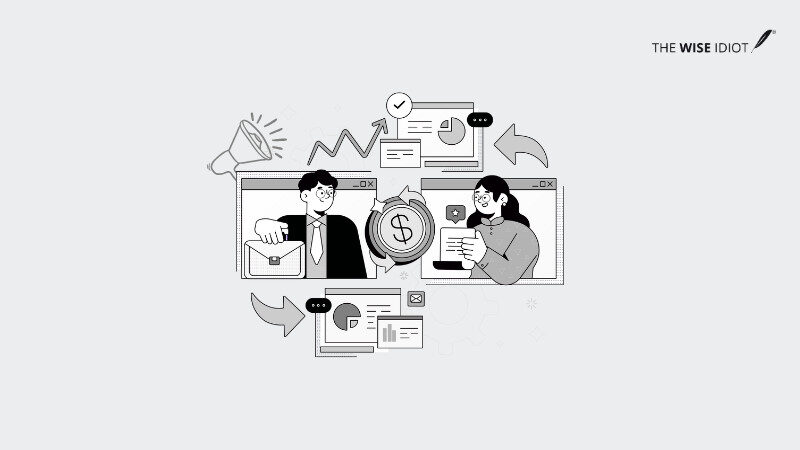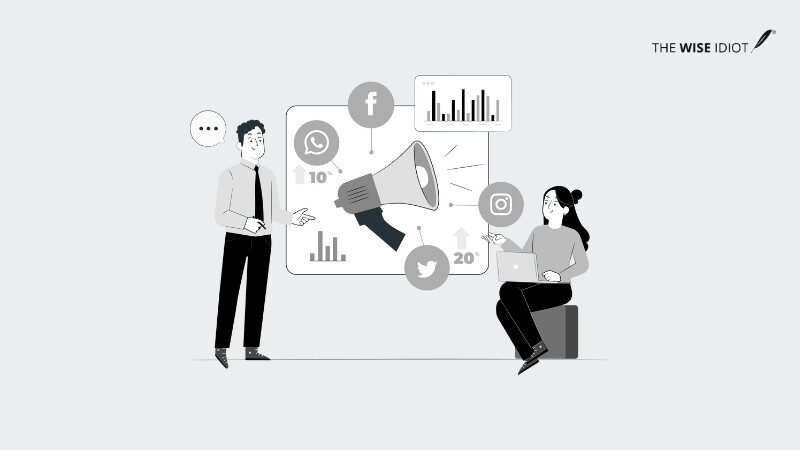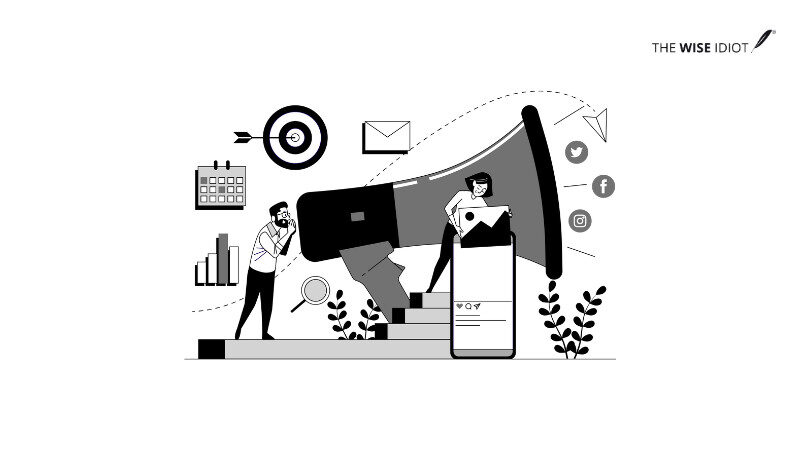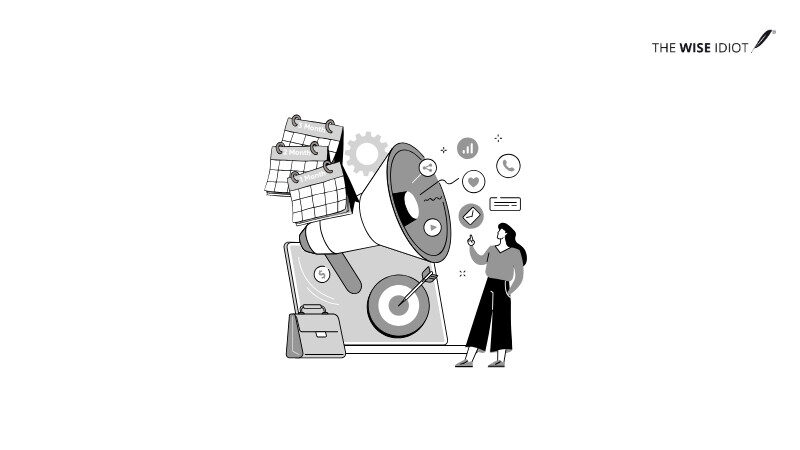B2B marketing in 2025 is more complex, but companies that master the right mix of channels—like SEO, LinkedIn, email, video, ABM and paid ads—are winning big.
Success lies in picking the best channels for B2B marketing, integrating them effectively and delivering consistent value. Start with your audience’s preferences, optimize for ROI, and scale strategically.
B2B marketing isn’t getting any easier. If anything, it’s becoming more complex as buyers become pickier, budgets get tighter and competition heats up. But here’s the thing: the companies that master the right B2B marketing channels are absolutely crushing it.
So which channels should you focus on in 2025? And more importantly, how do you choose the ones that’ll actually move the needle for your business?
Here’s what we’ve learned.
Why B2B Marketing Is Different (And Why That Matters)
Before we dive into specific channels, let’s get one thing straight: B2B marketing isn’t just B2C marketing with suits and spreadsheets. It’s a completely different beast.
- 94% of B2B buyers report conducting some degree of research online before making a purchase
- The average B2B purchase involves 6.8 decision-makers across multiple departments
- Sales cycles lengthened by 32% year-over-year for complex, mid-market deals in 2022
Think about it. When someone buys a pair of sneakers online, it’s usually a quick decision. They see, they like, they buy.
But when a company is choosing a new CRM system or cybersecurity solution? That’s a months-long process involving multiple stakeholders, extensive research and serious money.
Because buyers are more informed and involve more stakeholders, B2B digital marketing channels must be tailored to build trust, demonstrate value and nurture leads.
Your marketing needs to:
- Build trust over time
- Educate multiple decision-makers
- Nurture relationships for weeks or months
- Prove ROI and value at every step
1. Search Engine Optimization: The Compound Growth Engine
SEO remains the foundation of sustainable B2B marketing because it targets high-intent prospects when they’re actively seeking solutions. But the game has changed dramatically.
The Technical Foundation That Matters
Core Web Vitals are non-negotiable: Google’s ranking algorithm now heavily weights page loading speed, interactivity, and visual stability. Pages that load within 2.4 seconds have an average conversion rate of 1.9%, but that drops to 0.9% at 3.3 seconds—a decrease of over 50%. Even a shift from 2 to 4 seconds can cut conversions in half.
E-A-T (Expertise, Authoritativeness, Trustworthiness): Google’s algorithm specifically looks for industry expertise. This means author bylines, detailed about pages and citations from authoritative sources are the ranking factors.
Technical SEO checklist:
- Schema markup for business information
- SSL certificates and HTTPS
- Mobile-responsive design
- XML sitemaps with proper priority settings
- Clean URL structure reflecting business hierarchy
Content Strategy That Converts
The most successful B2B SEO strategies focus on three content types:
Bottom-of-funnel commercial intent keywords: Terms like “best CRM for manufacturing” or “enterprise security solutions comparison.” These typically have lower search volume but 5x higher conversion rates.
Problem-aware content: Articles addressing specific pain points your prospects face. Example: “Why Your Current Inventory Management System Is Costing You Money” rather than generic “Inventory Management Best Practices.”
Thought leadership content: Industry analysis, trend predictions and data-driven insights that position your company as a trusted advisor. This builds topical authority and earns high-quality backlinks.
2. LinkedIn Marketing: The Relationship Accelerator
LinkedIn generates 277% more leads than Facebook and Twitter combined for B2B companies, but most businesses are barely scratching the surface of what’s possible.
Personal Branding Strategy
The highest-performing B2B companies treat LinkedIn as a personal branding platform first, company promotion second. Here’s the framework:
The 4-1-1 Rule: For every six pieces of content, share four pieces of educational/industry content, one piece of company content, and one personal/behind-the-scenes post.
Thought leadership positioning: Your executives should be publishing weekly articles on industry trends, sharing contrarian viewpoints and engaging meaningfully in comment sections.
Employee advocacy programs: Companies with active employee advocacy see more traffic to their company pages. Create content templates and training to help employees share professionally.
LinkedIn Ads That Actually Work
Sponsored InMail campaigns: Personal messages to specific prospects have higher open rates than cold emails.
Lead generation forms: Pre-filled forms using LinkedIn profile data see 13% higher conversion rates than traditional landing pages.
Targeting precision: Layer job title, company size, industry, and seniority level for hyper-targeted campaigns. The sweet spot is audiences of 50,000-100,000 people.
Video ads for engagement: LinkedIn video ads hold attention 3x higher than static image ads, especially for product demos and customer testimonials.
3. Content Marketing: The Authority Building Machine
Content marketing works, but only when it’s strategically aligned with your sales process and buyer’s journey. The companies seeing the best results have moved beyond blog posts to comprehensive content ecosystems.
The Content Framework That Drives Pipeline
| Stage | Description |
| Pillar Content Strategy | – In-depth guides (3,000+ words) on core topics – Build supporting content that links back to pillar pages for topical authority and SEO gains |
| Awareness Stage | – Industry trend reports – Educational guides |
| Consideration Stage | – Comparison guides – ROI calculators – Case studies |
| Decision Stage | – Product demos – Free trials – Implementation guides |
| High-Converting Formats | – Interactive calculators – Industry reports with original data – Video case studies – Template downloads |
Content Distribution Strategy
Creating great content is only half the battle. Distribution is where most B2B companies fail:
Owned channels: Your website, email list and social media accounts
Earned channels: Media coverage, guest posts, podcast appearances
Paid channels: Content promotion through LinkedIn, Google and industry publications
The most successful B2B companies spend as much time on distribution as they do on creation.
4. Email Marketing: The Revenue Driver
Email marketing delivers the highest ROI of any digital marketing channel, but B2B email marketing in 2025 requires sophisticated segmentation and automation.
Advanced Segmentation Strategies
- Behavioral segmentation: Track how prospects interact with your website, content and emails to create dynamic segments.
- Account-based segmentation: Create specific email sequences for different target accounts and industries.
- Lifecycle stage segmentation: Different messaging for leads, marketing qualified leads, sales qualified leads and customers.
- Engagement-based segmentation: Separate highly engaged subscribers from dormant ones to maintain deliverability.
Deliverability Best Practices
With increasingly sophisticated spam filters, deliverability is crucial:
- Authentication protocols: Implement SPF, DKIM, and DMARC records
- List hygiene: Regularly clean your email list and remove inactive subscribers
- Engagement monitoring: Track open rates, click rates and spam complaints
- Reputation management: Use dedicated IP addresses for high-volume sending
5. Video Marketing: The Engagement Multiplier
Video content generates 1200% more shares than text and images combined, and B2B buyers are increasingly expecting video content throughout their journey.
Video Content That Converts
- Product demos: Screen recordings with voiceover explaining key features and benefits.
- Customer success stories: Real customers explaining their challenges and how your solution helped.
- Educational content: How-to videos, industry trend discussions and best practice guides.
- Behind-the-scenes content: Humanize your brand by showing your team, process and company culture.
Video Distribution Strategy
- YouTube for SEO: Optimize videos for search with keyword-rich titles, descriptions and tags.
- LinkedIn for B2B audiences: Native video posts get more engagement than external links.
- Email for nurturing: Embedded video thumbnails increase click-through rates by 65%.
- Website for conversion: Landing pages with video see higher conversion rates.
6. Account-Based Marketing: The Precision Strike
ABM isn’t just a buzzword, companies using ABM generate 208% higher marketing-attributed revenue. But success requires coordination between marketing, sales and customer success teams.
ABM Technology Stack
- Account identification: Use tools to identify target accounts showing buying signals.
- Content personalization: Dynamic content that changes based on the visiting account.
- Multi-channel orchestration: Coordinated campaigns across email, social, ads and direct mail.
- Account intelligence: Real-time data about account engagement and buying signals.
ABM Campaign Framework
- Account selection: Focus on 50-200 high-value target accounts rather than thousands of prospects.
- Persona mapping: Identify all decision-makers and influencers within target accounts.
- Content customization: Create account-specific content addressing their unique challenges.
- Multi-touch campaigns: Coordinate touchpoints across multiple channels and team members.
- Success measurement: Track account-level engagement, pipeline velocity, and deal size.
7. Paid Advertising: The Lead Acceleration System
B2B paid advertising has evolved beyond simple keyword bidding to sophisticated audience targeting and attribution modeling.

Google Ads for B2B
- Search campaigns: Target high-intent keywords with tightly themed ad groups.
- Display remarketing: Re-engage website visitors with relevant ads across the web.
- YouTube advertising: Video ads targeting business-related content and channels.
- Smart bidding strategies: Use automated bidding to optimize for conversions, not just clicks.
LinkedIn Advertising Deep Dive
- Sponsored content: Native ads that appear in the LinkedIn feed with high engagement rates.
- Message ads: Direct messages to prospects’ LinkedIn inboxes.
- Dynamic ads: Personalized ads using LinkedIn profile data for higher relevance.
- Lookalike audiences: Target prospects similar to your best customers.
Attribution and Measurement
- Multi-touch attribution: Understand how different touchpoints contribute to conversions.
- View-through tracking: Measure the impact of display ads on later conversions.
- Offline conversion tracking: Connect online ads to offline sales and phone leads.
- Customer lifetime value optimization: Bid based on customer value, not just initial conversion.
8. Social Media Marketing: The Multi-Platform Approach
While LinkedIn dominates B2B social media, smart companies are diversifying across platforms to reach different audiences and buying committee members.
Platform-Specific Strategies

Twitter/X for thought leadership:
- Share industry insights with relevant hashtags
- Engage in Twitter chats and industry conversations
- Use Twitter threads to break down complex topics
- Participate in relevant hashtag discussions
YouTube for educational content:
- Create how-to videos and tutorials
- Develop product demonstration series
- Share customer success story videos
- Optimize for search with keyword-rich descriptions
Instagram for company culture:
- Behind-the-scenes content showing your team
- Employee spotlights and company values
- Industry event coverage and networking
- Visual storytelling about your company mission
Social Media ROI Measurement
- Social listening tools: Monitor brand mentions and industry conversations
- UTM tracking: Measure traffic and conversions from social media
- Employee advocacy metrics: Track reach and engagement from employee sharing
- Brand awareness surveys: Measure the impact of social presence on brand recognition
9. Webinars and Virtual Events: The Authority Builder
Virtual events generate higher-quality leads than other marketing channels because they allow prospects to experience your expertise firsthand.
Webinar Strategy Framework

- Topic selection: Address specific pain points your prospects face, not just product features.
- Format variety: Mix educational presentations, panel discussions, and interactive Q&A sessions.
- Promotion strategy: Multi-channel promotion including email, social media, and partner networks.
- Follow-up sequences: Automated email sequences for attendees and no-shows.
Event Technology and Experience
- Interactive elements: Polls, Q&A, breakout rooms, and live chat increase engagement.
- Professional production: High-quality audio and video create credibility and trust.
- On-demand availability: Record everything and create a content library for ongoing lead generation.
- Integration with CRM: Automatically sync attendee data and engagement metrics.
10. Podcasting: The Trust Building Channel
B2B companies are seeing strong results from both hosting shows and guest appearances.
Podcast Hosting Strategy
- Niche focus: Target specific industries or job functions rather than broad business topics.
- Interview format: Bring on industry experts and customers to provide diverse perspectives.
- Consistent publishing: Weekly or bi-weekly episodes build audience and credibility.
- Multi-format content: Turn podcast episodes into blog posts, social media content and video clips.
Guest Appearance Strategy
- Target relevant shows: Research podcasts your prospects actually listen to.
- Pitch compelling topics: Offer unique insights or data rather than generic advice.
- Professional preparation: High-quality audio and engaging conversation skills are essential.
- Follow-up content: Create blog posts or social media content from your appearances.
The Integration Imperative: Building Your Channel Mix
The most successful B2B companies don’t rely on single channels – they create integrated campaigns where each channel amplifies the others.
Campaign Integration Example
- Create original research report (content marketing)
- Optimize for search (SEO)
- Promote on LinkedIn (social media marketing)
- Send to email list (email marketing)
- Create video summary (video marketing)
- Host webinar discussion (events)
- Pitch to media (PR)
- Use in sales conversations (sales enablement)
Building Your 2025 B2B Marketing Strategy
(design)
Channel Selection Framework
Audience research: Survey your customers about their preferred channels and content types.
Competitive analysis: Identify where your competitors are succeeding and where there are gaps.
Resource assessment: Be realistic about your team’s capabilities and capacity.
Budget allocation: Start with 2-3 channels and expand as you prove ROI.
Implementation Roadmap
Month 1-2: Foundation building (website optimization, analytics setup, content audit)
Month 3-4: Channel launch (start with highest-impact channels for your audience)
Month 5-6: Optimization and expansion (refine successful channels, test new ones)
Month 7-12: Scale and integration (build integrated campaigns across multiple channels)
Success Metrics That Matter
Pipeline metrics: Marketing qualified leads, sales accepted leads, opportunity creation
Revenue metrics: Marketing-attributed revenue, customer acquisition cost, lifetime value
Engagement metrics: Content consumption, email engagement, social media interaction
Efficiency metrics: Cost per lead, conversion rates, sales cycle length
The Bottom Line: Execution Over Everything
B2B marketing in 2025 requires building an integrated approach that meets your audience where they are and guides them through their buying journey.
Start with the B2B marketing channels that align best with your audience and resources. Execute them really well. Measure everything. Then gradually expand your efforts as you build expertise and see results.
Wondering which are the best B2B marketing channels to focus on this year? Begin with what drives the highest ROI for your business model.
About The Wise Idiot
We’re The Wise Idiot, and yes, that’s really our name. We’re a content marketing agency that’s been helping startups and growing brands tell their stories since 2017.
Here’s what we do: we take the stuff that makes your business special and turn it into content that actually works. Whether that’s writing that doesn’t put people to sleep, websites that make visitors stick around, or social media that gets people talking, we handle it all.
FAQs
- What are the best B2B marketing channels in 2025?
The most effective channels include SEO, LinkedIn, content marketing, email, video, ABM, paid ads and webinars. The key is integration and alignment with your buyer’s journey. - How is B2B marketing different from B2C marketing?
B2B involves longer sales cycles, multiple decision-makers and complex products or services. It requires trust-building, education and a value-focused approach. - How can B2B businesses use LinkedIn effectively?
Use LinkedIn for personal branding, thought leadership and precise ad targeting. Employee advocacy and lead gen forms can significantly boost performance. - How do I choose the right B2B marketing channels?
Base it on audience research, resource availability, and where your competitors are succeeding. Start with 2–3 channels and expand once you see traction. - How do I build an integrated B2B marketing strategy?
Start with core content, optimize for SEO, promote via email and social, then expand to video, events and ads, making sure all channels reinforce each other.









